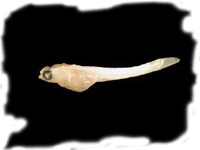EcoGSA History
Ecology and Evolution did not become a degree granting program at Rutgers until 1970, and an independent Department within the University was not founded until 1996. However, thanks to its long history, Rutgers has played a part in the validation of these two subjects as modern fields of science.
In the early American colleges, the sciences as we know them today did not appear in the curriculum. In the 1700s Queens College, now Rutgers, developed a course in Natural Philosophy from a syllabus that originated in England, as it had for Harvard in the 17th century, and this can be regarded as the first approach to science at the University. The course was first developed by Samuel Johnson, and included subjects such as: mathematics, mechanics, physics, and astronomy, among others. One of the early textbooks used was Hershell's Natural Philosophy (1835) and, although there is use of the word science in conjunction with zoology, botany, and geography in the text, there was no formal presentation of them as scientific fields. Clearly, this is indicative that knowledge about the subjects existed and, in fact, botany was already developed as a field by 1830 thanks to the work by Amos Eaton, Asa Gray, John Torrey, and others.

Modern ecology can trace its roots to plant geographers, such as Friedrich Heinrich Alexander von Humbolt, who in the early 1800s correlated vegetation types from equatorial America with various environmental characteristics. At Rutgers, botany has been part of the curricula since 1831 when Lewis Caleb Beck, who had worked previously with Amos Eaton, was hired as professor of Chemistry and Natural History (for $200). During his tenure at Rutgers, he included botany as one of the subjects covered in his curriculum, and published a textbook on the subject. After the death of professor Beck, George Hammel Cook, one of Eaton's student, was hired as professor of Chemistry and Natural History in 1853, and under his direction, the sciences flourished at Rutgers. Other professors were hired to help teach courses in botany, chemistry, geology, physical geography, physics and zoology, and by 1863, a new "Scientific School" was established at Rutgers. Among the new hires were Byron D. Halsted, John B. Smith, and Julius Nelson, who studied botany, entomology, and zoology. In the early 1900s additional hires included Jacob G. Lipman and Selman Waksman, both microbiologists, and by 1921, Rutgers had four departments in the Biological Sciences: Bacteriology, Botany, Physiology & Biochemistry, and Zoology. Implicit in the research within each of these departments was the ecology of each of the taxa studied. For example, Thurlow Christian Nelson, son of Julius Nelson, was also part of the faculty at Rutgers from 1919 until 1956, and was one of the world's leading authorities in marine bivalve molluscs. Professor T.C. Nelson is recognized as an important contributor to the fields of limnology, parasitology, and ecology.
A graduate program in Ecology was formerly started in the 1970s by Professors Murray Buell and Paul Pearson, and its first graduates completed their degree in 1978. Dr. Buell was an eminent plant ecologist and is widely recognized for his research in the New Jersey Pinelands, as well as old field succession at Rutgers' Hutcheson Memorial Forest. The Hutcheson Memorial Forest is home to one of the longest ongoing studies on succession. The study, now known as the Buell-Small Succession Study , began in 1958 and it documents succession on released agricultural fields. The Buell Award of the Ecological Society of America for the best student presentation is named in honor of Dr. Murray Buell. Pearson's research included work on small mammals, frogs, and turtles. He left Rutgers to become President of Miami University in Oxford, Ohio, where the biology building has been named in his honor.
Sources:
Cole, W.H. (1963) Biology at Rutgers: An Address Read at the Dedication of the Nelson Biological Laboratories, Rutgers-The State University, 29 p.
Morin, P.J. personal communication
Smith, R.L. and Smith, T.M. (2001) Ecology and Field Biology , 6th Edition, Benjamin Cummings, 771 p.
Cole, W.H. (1963) Biology at Rutgers: An Address Read at the Dedication of the Nelson Biological Laboratories, Rutgers-The State University, 29 p.
Morin, P.J. personal communication
Smith, R.L. and Smith, T.M. (2001) Ecology and Field Biology , 6th Edition, Benjamin Cummings, 771 p.
